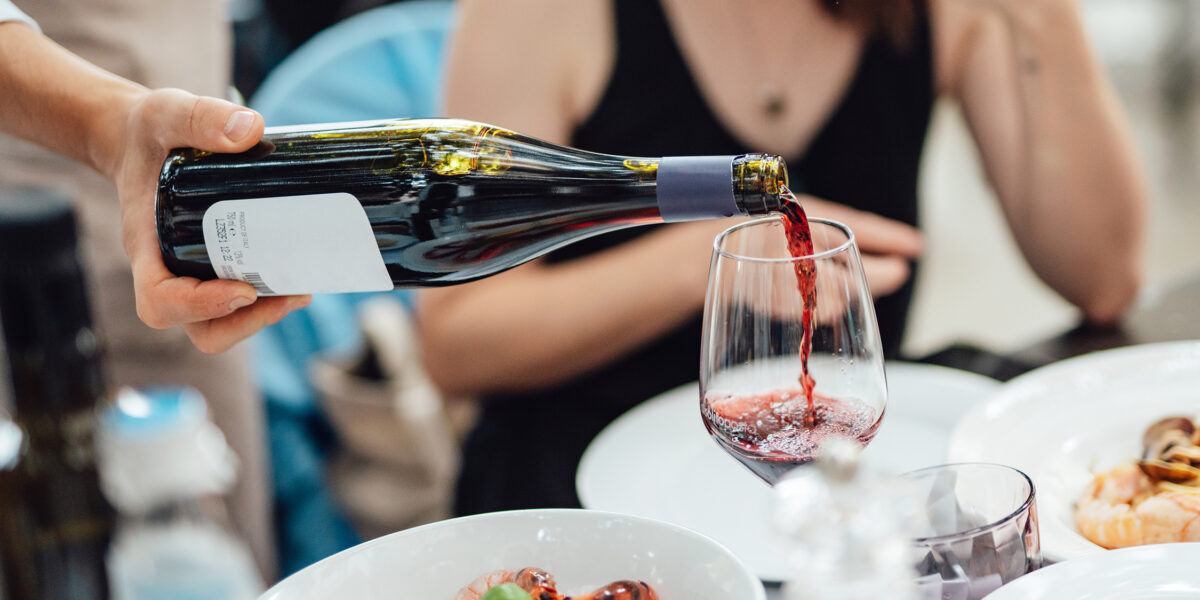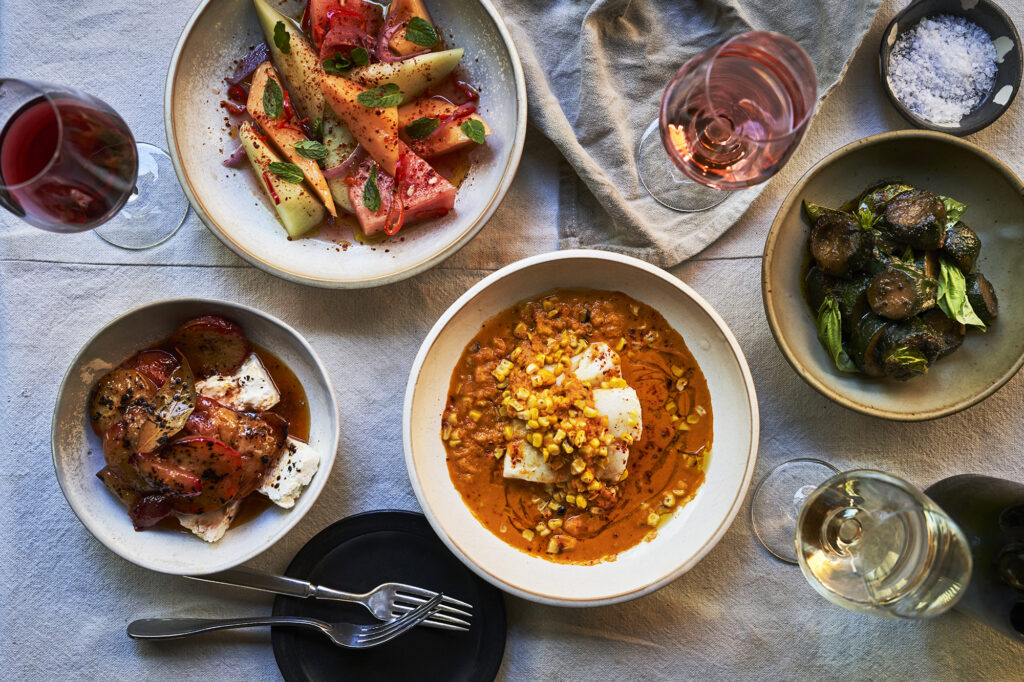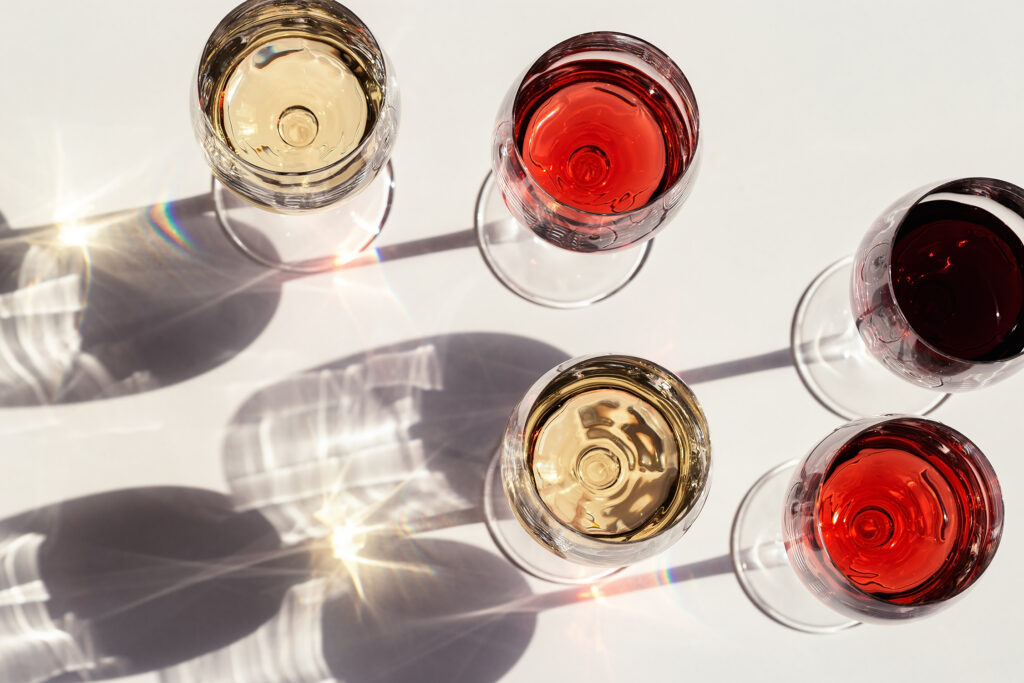
5 Easy Ways to Order Wine at a Restaurant, According to Sommeliers
Tips worth toasting to!

Oscar Wong/Getty Images
Eating out isn’t all complimentary bread baskets and scoring a prime-time reservation at the coolest new restaurant: Not only do you have to scan through the menu to find the very best dish, but you also need to pick a great glass of vino to pair with it. (And, if you’ve seen some wine lists, that mere decision can be a complete doozy.)
“Wine enhances the entire dining experience,” explains Guillaume Large, winemaker at Résonance Wines in Willamette Valley, Oregon. “Selecting a bottle for the table is an important decision because it will drive the direction of the meal and the direction of the conversation.”
If you’re looking for some pointers, you’ve come to the right place. Below, two experts are sharing their insider tips and tricks to ordering wine like a pro. It doesn’t matter if you end up with a glass of red, white, or rosé, the right varietal can change everything.
“It’s fine to drink what you like and what you’re familiar with,” Large explains. “But considering what you will eat and how the characteristics in the wine will complement your food will open the door for magic.”

Thomas J. Story
1. Understand the Menu
Admittedly, looking at a lengthy wine list may seem a tad overwhelming, but don’t worry: They’re often organized with your palate and environment in mind. “Wines usually appear from lightest to fullest-bodied, progressing in color, giving you a subtle hint for how to order wine at a restaurant,” says Maggie Kruse, winemaker at Jordan Vineyard & Winery in Healdsburg, California. “Start with bubbles, then order a crisp white or rosé with your lighter course before a fuller-bodied red or rich white wine with your main course.” So, if you’re dining al fresco during the dog days of summer, you might want to keep your attention to the upper half of the menu. In fact, Kruse adds that some sommeliers get creative with restaurant wine lists and organize the wines by flavor and body—including adjectives like racy, bright, or silky—which make how you read a wine list even easier.
2. Follow the Flavors
Unless you’re grabbing a quick glass of wine, you’ll want to make sure your vino pairs nicely with your entrée. Translation: The flavors of your meal will play a major role in your wine pairing. “Wines with higher acidity can cut through spicy or creamier dishes to cleanse and refresh your palate—making your next bite even more delicious than the last,” says Kruse, citing white grapes like Chardonnay. Of course, there’s always a time and place for Pinot Noir or Cabernet Sauvignon. “[Red wines] have the tannins, black fruit, spicy notes, so immediately this is going to require food that is a little bit more generous, with texture,” Large says. “Meat, for example.”
If you’re torn between a couple options, remember that what grows together often goes together. In other words, a Super Tuscan would go excellently with a heaping plate of spaghetti and meatballs.
3. What Does Your Sauce Say?
Still, pairing a wine’s aromas with the flavors of your entrée can feel a tad intimidating. Instead, why not aim for a visual cue? “Red sauce or fruity sauce will come to life with a red wine,” Large explains. “A creamy sauce will be enhanced by a white wine.” Yes, it can really be that simple.

yrabota/Getty Images
4. Know Your Preferences
When it comes to choosing a wine that can really go with anything, there’s no hard-and-fast rule. For example, Kruse turns to Chardonnay because of its “succulent acidity, minerality, and crispness.” Meanwhile, Large favors the bold delicacy of Pinot Noir. But what’s your favorite? “Take a photo or make a note of what wine styles and flavors speak to your palate,” Kruse explains. “This knowledge will serve as a solid foundation when you’re flipping through a thick wine list at a restaurant.” Ultimately, you want to select a wine that you’ll actually enjoy sipping on, so why would you spring for a Syrah if you know it’s not your thing?
5. Don’t Be Afraid to Ask
Still torn on the perfect glass of vino? There’s no shame in asking a restaurant’s sommelier for their recommendations. As Kruse points out, that’s exactly what the wine pros are there for. “If you don’t know what you like, that’s cool,” she says. “Give a price range you want to spend and share what food you’ll be ordering.” Cheers!
